I could go on and on about how fear is perfectly normal and natural, but if you're caught up in it you might be rolling your eyes and expecting this post to be all about embracing your fear. I'm going to disappoint you now and tell you it's not about embracing, but dissecting that fear. So grab your lab coat and let's get to work.
There's an excellent TED Talk by Karen Thompson Walker about what fear can teach us, be sure to check it out if you've got 11 minutes to spare.
Fear & Storytelling
Fears share many similarities with stories, and we could even choose to call them stories. These fear stories have characters, one of which is ourself. They have plots. They have beginnings and middles and ends.
You go for a ride. The weather turns windy. Your horse spooks and you fall off.
Our fears can be just as vividly imagined and dramatic as stories you'd find in a novel; some stranger came galloping up behind you on the trail, riding a stallion, and rudely let his horse aggressively bite at your mare while riding past.
Lastly, fears also have suspense. What will happen next, in the future?
Reading Our Fears
If our fears are stories we tell, can we also choose to read them in a particular way? Can we change our novel to a non-fiction, scientific work about as dry as the Arizona desert?
Men are not afraid of things, but of how they view them.
Epictetus, Greek Sage & Philosopher
Can we change: ‘his horse came galloping up, rearing angrily before throwing his rider on the ground and dragging him by the stirrup through the roughest ground in the pasture.'
To read: ‘at a fast canter the horse and rider approached the barbed-wire fence. The horse reared up missing the fence, resulting in the rider falling from the saddle with a foot stuck in the stirrup iron. The horse ran and the rider was dragged by the stirrup through the pasture areas which were very rough ground.'
What's the difference? One reads more dramatically, with assumptions being made about the motivations, intentions and exact actions made by either party. The second weeds those out and presents only the facts.
There is no illusion greater than fear.
Lao Tzu, Chinese Philosopher & Poet
We can't know if the horse angrily galloped up to the fence because we can't ask him directly, so it's an assumption based on our interpretation – which could be flawed or further influenced by other fears/stories.
However in the second instance we're able to see all the facts presented, and this gives us room to then approach a possible solution to a future crises. Do we need to create a safe riding space that doesn't contain barbed wire, and is separate from the pasture where the footing could cause injury in another accident? Did the rider lose control or intentionally ride the horse at the fence and can those actions be avoided in the future? Does the rider need to invest in safety stirrups to help prevent being dragged if they should fall again?
All of those thoughts are more useful than dwelling on the dramatic features of the first version of the story where we're likely to create more fear stories around the most vivid highlights. “That horse is mean and angry and can't be trusted!” or “That horse will dump you in a second and drag you if he gets the chance.”
Learning to dissect our daily fears as they show up
Assembling our fear stories into a clean fact-based list can be immensely useful when we're faced with overwhelming fears like, “I'm so afraid I'll fall off my horse I can't even stand to get in the saddle anymore.”
But what about the smaller fear stories that creep up unannounced into full-blown whale tales?
- Practice with a horse-friend, telling each other fact-based fear stories about your ride or interaction with your horse each day. Be willing to call each other out when your fear story starts to become embellished.
- If you like to set goals for yourself, write a goal to overcome one small fear story each week. Maybe it's riding without stirrups for a whole hour, (“I dropped my stirrups and crossed them over my saddle and then my horse tried to trot off before I was ready and I couldn't stop him right because I was off balance and he got scared and I was squeezing with my legs because I didn't have my stirrups and he bolted and I nearly died.”). Or even catching your horse alone in a big herd, (“I walked out to the pasture and my horse was hanging out with this really unfriendly horse that likes to kick out at you when you don't expect it, and I couldn't get near him without the other horse following me really closely and making me nervous. Every time I tried to shoo him away he pinned his ears at me and came closer and my own horse kept walking away from me so I couldn't catch him. I was so scared I ran out of the pasture!”).
- Make a long term goal to overcome a larger fear story. Maybe you've blocked out a solid year to accomplish this, or maybe six months. Take it at the pace you're comfortable with. Perhaps your larger fear story is something like, “I really want to compete with my horse but he's a jerk to trailer load, is a butt and constantly paws when he's tied to the trailer and doesn't pay attention to me when we're away from home. The rules of competing are also really confusing.”
You could turn this around into small mini-goals. One to practice better loading on the trailer with your horse. Another to work on patience when being tied at the trailer. A third to get better connected with each other when you're away from home – maybe trailering to a friend's on a regular basis to gain experience training outside of his comfort zone but still within yours (i.e. not at the show). You could contact one of your local competition branches to get in touch with someone to help explain the rules of that competition. Sign up for some small local shows where you can continue working on all of your goals but without a major expectation that you might have going into a rated show or one you've invested a lot of time and money into attending.
Those are all excellent, actionable steps you can take to help navigate your fear story and make it useful. - Don't feel ashamed of your fear!
True story, I used to be panic-attack-inducing afraid of cantering. This wasn't when I was just starting to ride, although the idea of cantering in the beginning was a naturally nervous thing for me to picture too; no, this was after I'd been riding for 8 years I was suddenly struck. I couldn't determine any particular cause for my fear story, but it went something like, “I'm trotting my horse and want to canter but he just starts trotting faster and faster and faster and faster and I'm struggling to stay in the saddle because I have to ask for the canter from the sitting trot and no matter what I do with my legs or reins he won't slow his trot down and he won't go into the canter and just when I decide to give up asking he leaps into the fastest canter I've ever ridden and I fall off.”
That fear story would run through my head every time my instructor said, “why don't we do some canter work today?”
At the time I didn't know how to turn that fear story into actionable steps to a resolution, however I was lucky enough to already be heading down a path that would eventually bring me a solution – albeit probably a bit more drawn out solution.
Every rider has a fear story, don't be ashamed of yours
When I would work with riders who had big fears themselves I would tell them this story about being on the verge of tears in front of my riding instructor just at the *thought* of having to ask my horse for a canter, and all the effort I put into self-sabotaging my attempts to ask for canter just trying to avoid making my fear story come true.
And I'd tell them just how ashamed I was about that fear. “What's wrong with me that I'm afraid to canter?! I used to canter all over the place, even bareback and just a halter, and not give it a second thought? I can't possibly tell my instructor or my friends I'm afraid to canter, what will they think of me?!”
These riders were always surprised to hear this because the person they knew was someone who was completely comfortable cantering all over at any given moment, with or without a saddle or stirrups or reason.
But everyone has fear stories and I mean everyone. They might not look all the same but they're there. Take advantage of them as they should be, by developing an actionable plan to working through them at your own pace.
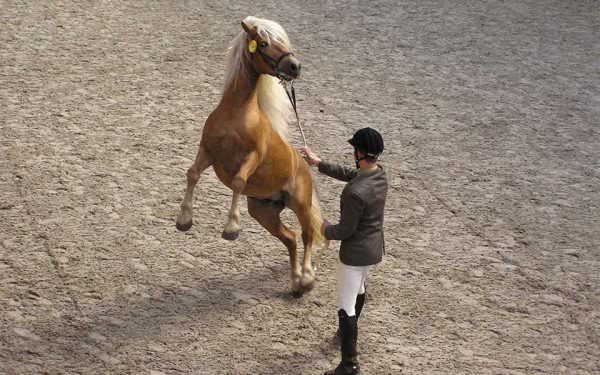
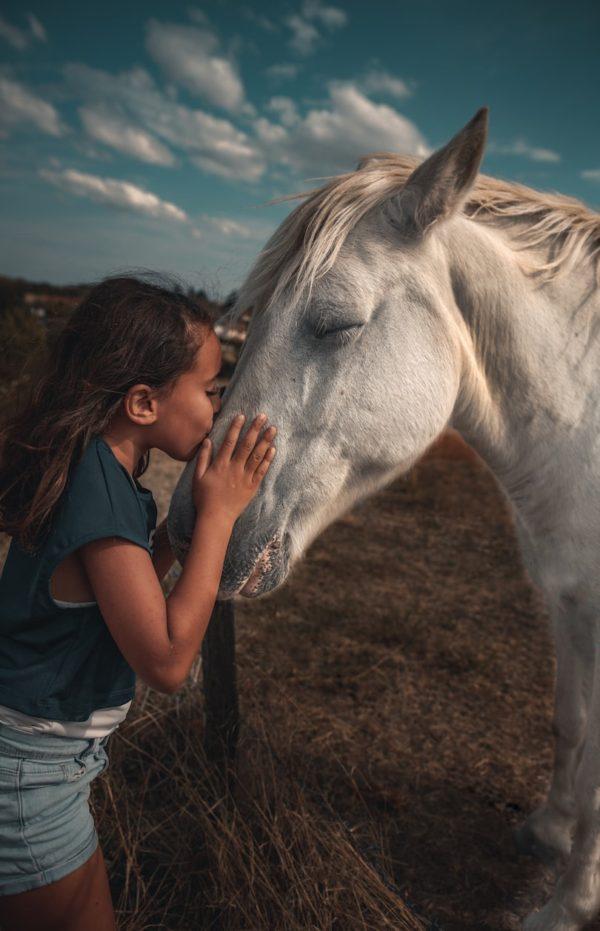
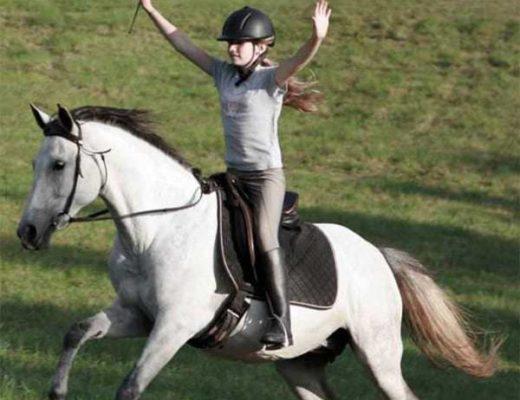
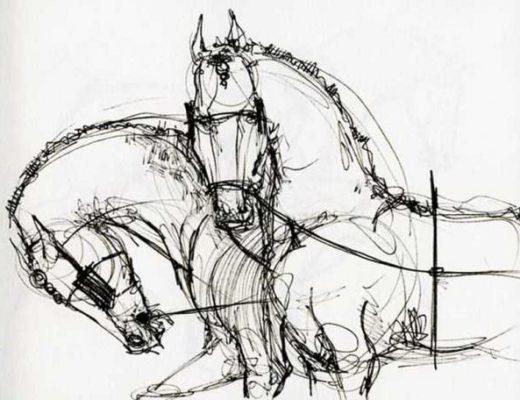
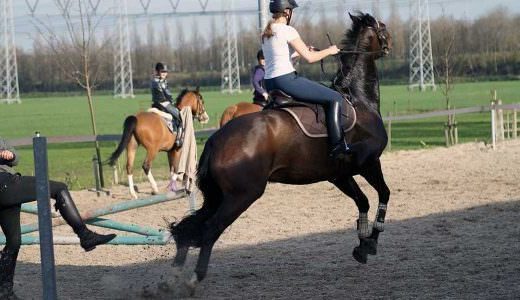
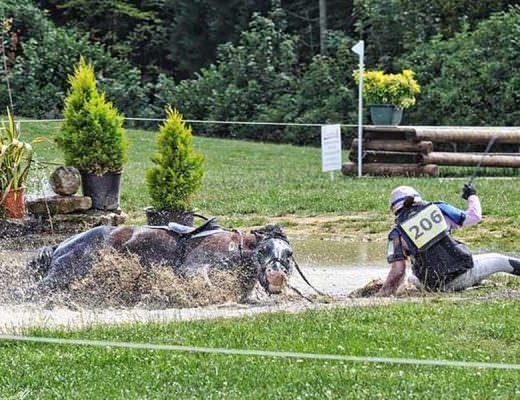
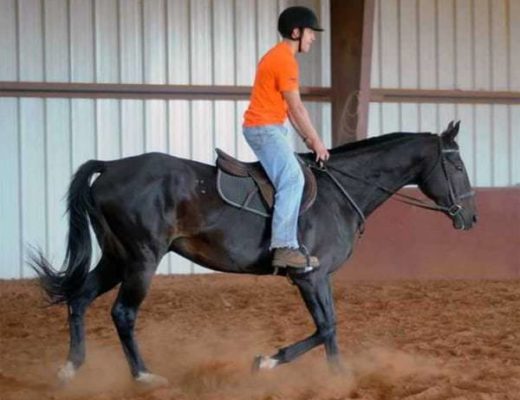

What a great post, tackling perhaps a difficult issue for some people – “Every rider has a fear story, don’t be ashamed of yours” – never easy to admit. My son rides and is quite nervous, having to prove to himself in small steps that he can do the things that other tackle head on. I tell him this is OK and it’s fine to develop at his own pace. I think this will ultimately make him a better rider as he will hone his skills finely over time, and who cares what pace he progresses at, it’s fun at the end of the day. By facing his fears in his own way without it being a ‘trial by fire’ I think he reaps the psychological benefits of horse riding whilst still making it fun.
His instructor thankfully realises this and is sympathetic, encouraging and makes every situation a laugh, which keeps him and other children with issues comfortable yet still pushes them to achieve – good on her!
Fear comes in many layers. Often a deep rooted fear holds us back on many levels, until something happens, for instance a riding accident. Overcoming our fear to get back in the paddock or back in the saddle requires us to face the deeper fear holding us hostage. TY for this beneficial article, empowering people to admit and move forward with fear.